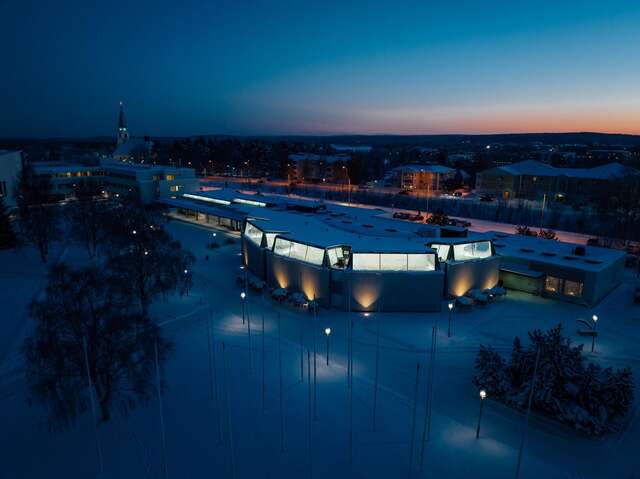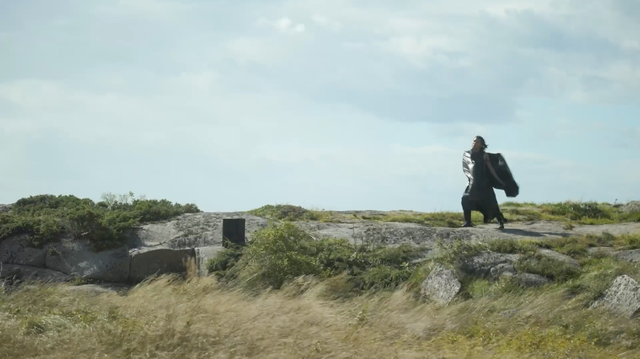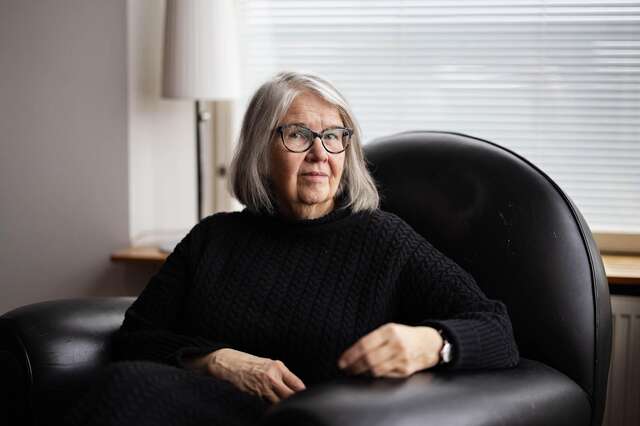The time for wood construction – before, now and in the future
Miina Jutila
Finnish Forest Museum Lusto organised a seminar, together with the Museum of Finnish Architecture and Archinfo, in which the focus was on wood construction and the use of forests. The seminar was followed by the opening of the the exhibition New Standards, which tells the story of Puutalo Oy (Timber Houses Ltd).
Presented for the first time at the 2021 Biennale Architettura in Venice, New Standards gets it third showing at the Finnish Forest Museum Lusto in Punkaharju, near Savonlinna, in south-eastern Finland. The exhibition produced by Archinfo and curated by Laura Berger, Philip Tidwell and Kristo Vesikansa, will remain open until 3 September, 2023.
In Lusto, the exhibition revealing the success story of the Puutalo enterprise, founded in 1940, is complemented by wall elements produced by the company for a school in Maununneva, Helsinki. The Kaarela School, a rare Finnish example of schools built by Puutalo Oy, was demolished in 2020 and the museum included some of the wooden elements in its collections. Read Kristo Vesikansa’s article about Puutalo schools.
In conjunction with the exhibition opening, the Finnish Forest Museum, together with the Museum of Finnish Architecture and Archinfo, organised a Finnish language seminar on wood construction, titled Puurakentamisen aika (“The time of wood construction”). The seminar approached the topic from three perspectives.
The original designer of the Lusto museum building, Professor Rainer Mahlamäki, talked about the design process and implementation 30 years ago. In 1991, an open architectural competition was held for the museum, in which Mahlamäki together with his partners of the 8 Studio took part with several entries. In Mahlamäki’s words, the day before the competition deadline, he took a look at the design concepts and noted that none of them had the qualities of a winner. So they quickly drafted yet another design and gave the entry the pseudonym “Lusto”, which means the growth ring of a tree.
For the architects at an early stage of their careers, Lusto opened the door to major commissions and international arenas. At the time, the Finnish regulations didn’t allow a big public building to have a wood frame, and as a result, the main building material is concrete. The presence of wood is strong, however, and the international media was fascinated by the facade battening the colour of the surrounding pine trees and the building’s strong connection to nature.
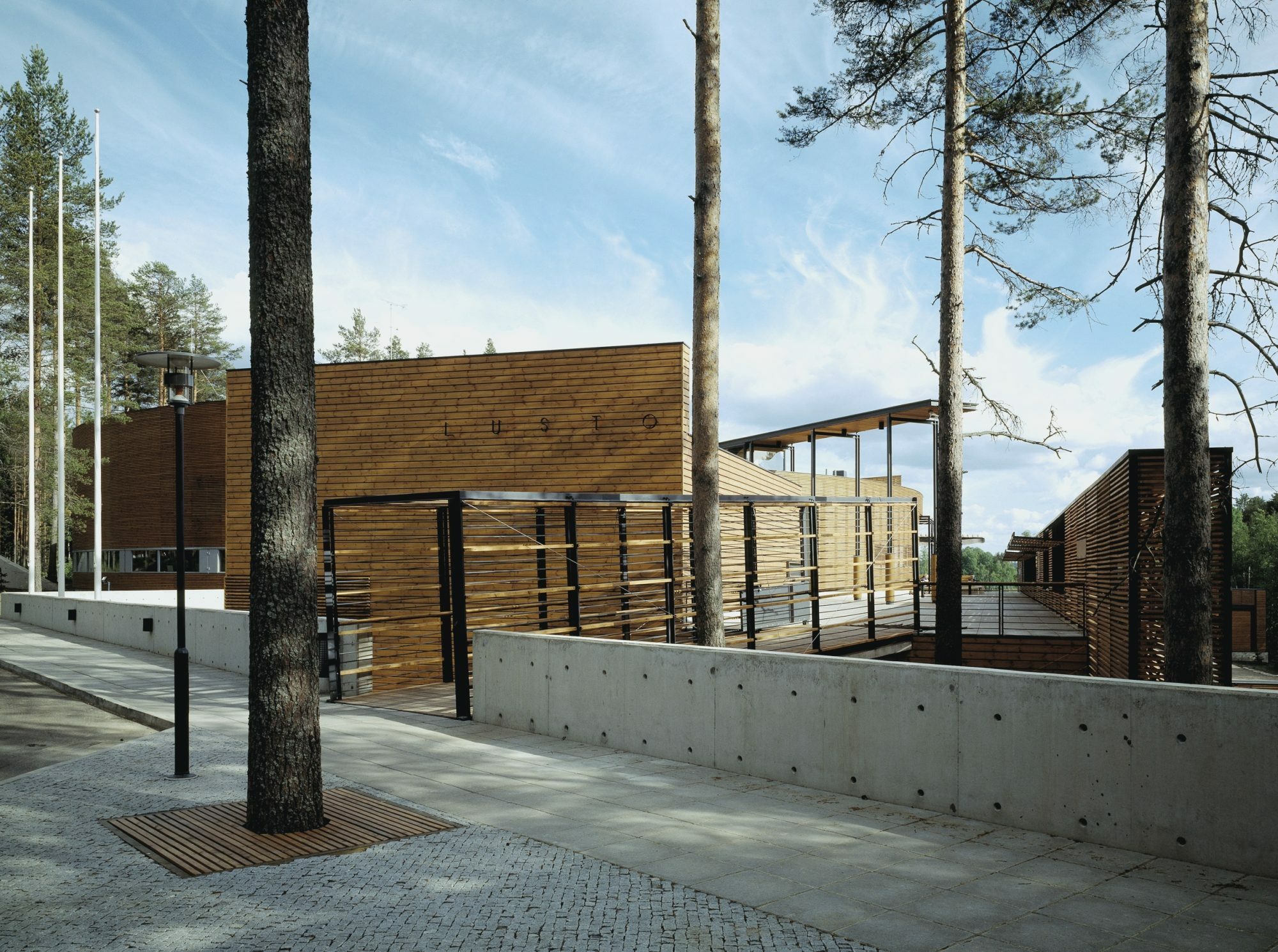
According to Mahlamäki, Lusto, which opened in June 1994, ended the era of postmodernism in Finland and the importance of the characteristics of materials was restored. The professor mentioned works of architecture that have inspired him and in which wood and other materials have been used in a way characteristic to them – structures that today would be called hybrids. Among these are the Otaniemi Chapel (1956) and Kontiotie rowhouses in Tapiola (1954), both by architects Heikki and Kaija Siren.
Mahlamäki places the Helsinki Central Library Oodi (ALA Architects, 2018) in the same continuum of hybrids with Lusto and names the Finnish Pavilion in the 1992 World EXPO in Seville by the then students of architecture Juha Jääskeläinen, Juha Kaakko, Petri Rouhiainen, Matti Sanaksenaho and Jari Tirkkonen, as one of the most significant buildings of our times. The Helvetinkolu (“Hell’s gorge”) pavilion was made up of two buildings which were counterpoints to each other: Kone (Machine), made of steel, and the wooden Köli (Keel), with a gorge connecting them.
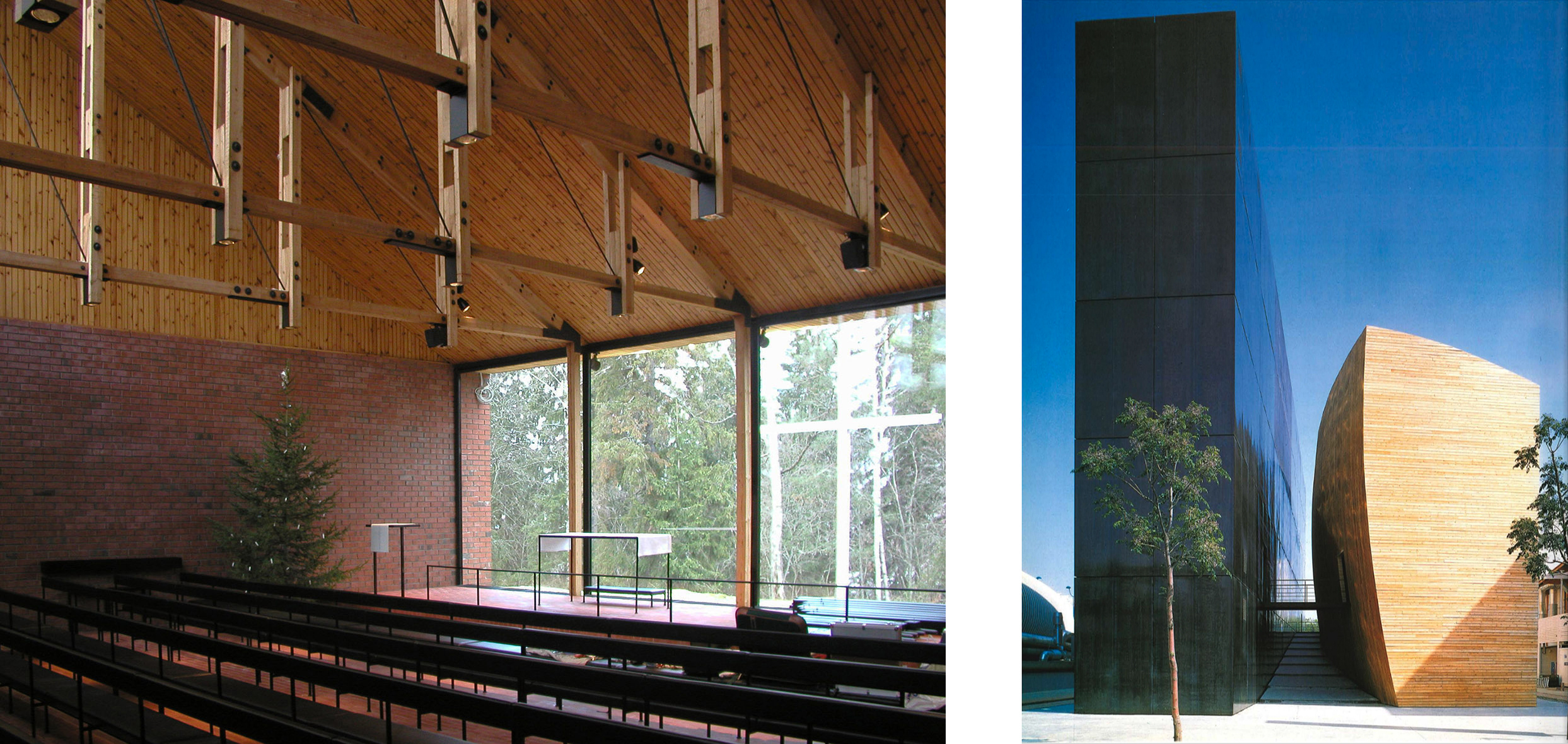
In September, the Finnish Forest Museum Lusto will close its doors for renovation. In the seminar, also architect Saara Kantele talked about the repairability and maintenance of buildings as key parts of sustainable construction. She is conducting a research on the aspects that need to be taken into account in order to secure the longevity and resilience of our building stock. According to Kantele, a building is a system, and construction for a long life and endurance is a larger system which contains many subsystems. Wood constructions starts from the forest and after many phases ends in recycling.
Kantele emphasised that although it is reasonable to use wood in construction – much more reasonable than in pulp-based single-use products – the focus should be on extending the life of the existing buildings. New buildings must be designed to be durable and repairable, and legislation and policy guidance have an important role to play here.
A single-material building is resilient. A building needs to be maintained and serviced. A properly maintained wooden building, repaired when necessary, is basically eternal. This is proven, for example, by the fact that houses built in the 1940s and 1950s by Puutalo Oy, a company that was born out of the rapid need for housing for evacuees, are still in use in Finland – and around the world. Dr Laura Berger, curator of the New Standards exhibition, presented the fascinating story of Puutalo Oy, which you can read more about at newstandards.info.
After the presentations, the experts sat down for a discussion led by Carina Jaatinen, Director of the Museum of Finnish Architecture. Topics discussed included sustainable building culture, values driving change, the need for guidance and measuring results.
Laura Berger discussed sustainable building culture from the perspective of renovation. Renovation is often exaggerated and ends up being over-renovated, when it would be better to think of it as a kind of cleaning: it does not have to be done comprehensively and with force. According to Rainer Mahlamäki, the leading value in contemporary construction is the economy, and for this not to be the case, there would have to be a major shift to an ecological way of life. Saara Kantele quoted from the New European Bauhaus goes into the Woods event: "We're going to have green economy or no economy at all".
